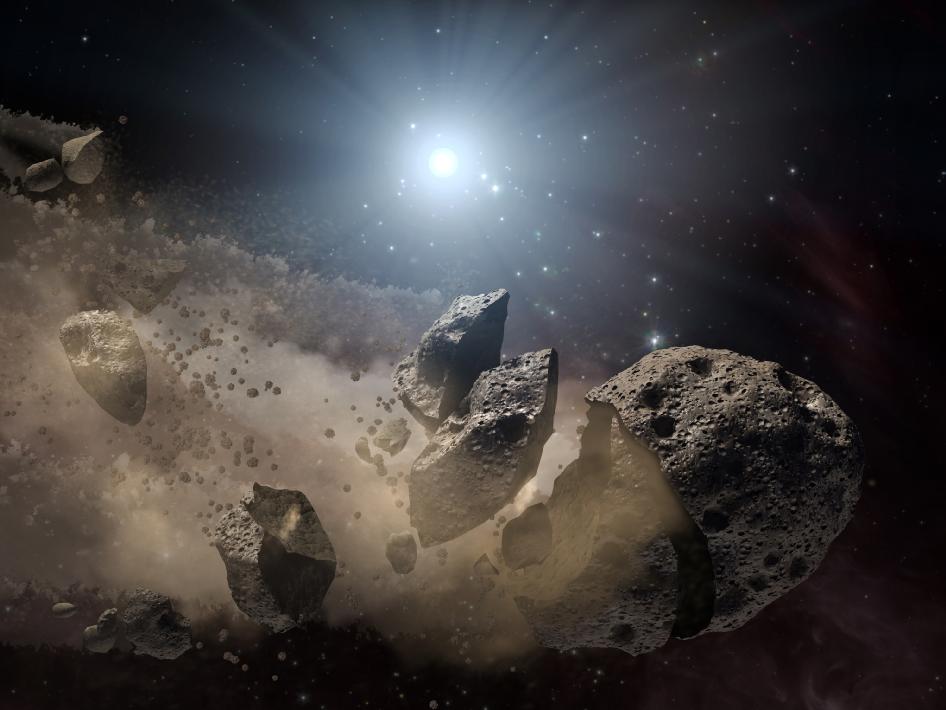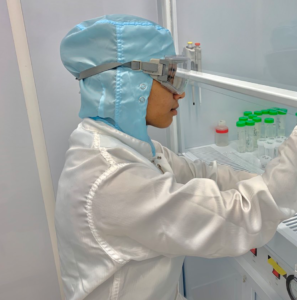Laboratory investigations of extraterrestrial samples, including meteorites and  samples returned by spacecraft missions (such as the Apollo lunar samples, the Genesis solar wind samples, the Stardust samples of comet Wild2, and Hayabusa samples of asteroid Itokawa), can provide valuable insights into the formation histories of their parent bodies in the early Solar System.
samples returned by spacecraft missions (such as the Apollo lunar samples, the Genesis solar wind samples, the Stardust samples of comet Wild2, and Hayabusa samples of asteroid Itokawa), can provide valuable insights into the formation histories of their parent bodies in the early Solar System.
Researchers and students in the Wadhwa Group are particularly interested in analyzing the stable and radiogenic isotopic compositions of extraterrestrial samples to understand the processes and timescales involved in the formation and early evolution of the Solar System and the rocky bodies within it.

To minimize contamination with terrestrial materials, all sample handling and chemical processing for such analyses are conducted in the ultra-clean Isotope Cosmochemistry and Geochronology Laboratory at Arizona State University. Image © ASU/ICGL.
Use the links below to explore our current research!
Conditions and dynamics in the solar nebulaWe are utilizing mass-independent isotopic anomalies in the stable isotopes of elements such as Cr and Ti as tracers for the incorporation of presolar materials into the solar nebula. In particular, the neutron-rich isotopes of Cr and Ti have a nucleosynthetic origin in supernovae and can be used to trace the incorporation of supernova materials into our Solar System, provide constraints on Solar System dynamics and mixing processes, and provide information on the genetic relationships between meteorites.
Torrano Z. A., Brennecka G. A., Williams C. D., Romaniello S. J., Rai V. K., Hines R. R., and Wadhwa M. (2019) Titanium isotope signatures of calcium-aluminum-rich inclusions from CV and CK chondrites: Implications for early Solar System reservoirs and mixing. Geochimica et Cosmochimica Acta 263: 13-30.
We are using the 26Al-26Mg (half-life ~0.72 million years) and 53Mn-53Cr (half-life ~3.7 million years) short-lived chronometers in combination with the long-lived Pb-Pb chronometer (based on the decay of 238U and 235U that have half-lives of ~4.5 billion years and ~700 million years, respectively) to determine precisely the timescales of accretion, melting, and differentiation of planetesimals that formed early in the history of the Solar System.
Srinivasan P., Dunlap D. R., Agee C. B., Wadhwa M., Coleff D., Ziegler K., Zeigler R., and McCubbin F. M. (2018) Silica-rich volcanism in the early solar system dated at 4.565 Ga. Nature Communications 9, 3036.
We also seek to understand the origin and history of water on Mars through studies of the volatile abundances and hydrogen isotope compositions of primary igneous materials in the martian meteorites.
We are additionally studying Icelandic basalts to understand the role of processes such as volatile degassing and fractional crystallization in the evolution of martian magmas.
Dunham E. T., Balta J. B., Wadhwa M., Sharp T. G., and McSween H. Y. Jr. (2019) Petrology and geochemistry of olivine-phyric shergottites LAR 12095 and LAR 12240: Implications for their petrogenetic history on Mars. Meteoritics & Planetary Science 1-25.
Using our proven method for analyzing trace amounts of water in nominally anhydrous minerals, we are performing correlated micro-scale investigations of hydrogen isotope compositions, water contents, and the oxidation state of iron in pyroxenes from a variety of lunar basalts.
This work is anticipated to have significant implications for understanding the origin, distribution, and evolution of water in the Moon’s interior, and for furthering our understanding of the origin and evolution of the Moon.
Spacecraft missions



